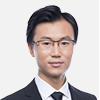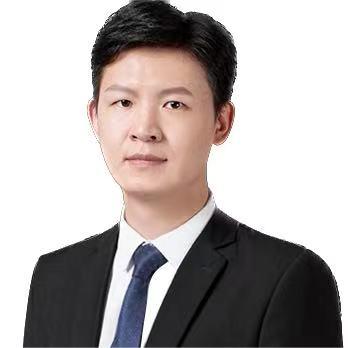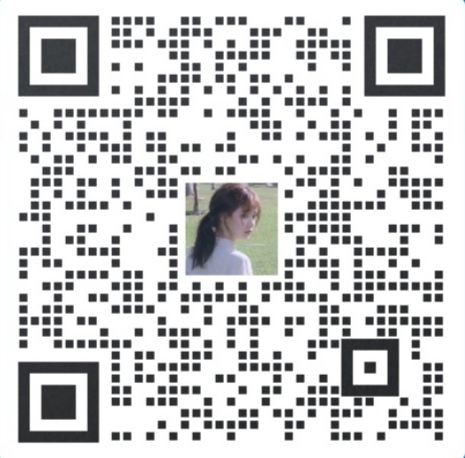全国2012年1月自学考试外语教学法试题
全国2012年1月高等教育自学考试
外语教学法试题
课程代码:00833
I. Multiple Choices: (20%)
Directions: In this section, you are given 20 questions, beneath each of which are four choices marked A, B,C and D. You are to make the best choice either to complete the incomplete statement or to answer the question. One point is given to each correct choice.
1. According to the records available, human beings have been involved in the study of language for ___________ years.
A. 1,000 B. 1,500转自环 球 网 校edu24ol.com
C. 2,000 D. 2,500
2. By the mid-_________ the upheaval in linguistics and psycholinguistics created by Chomsky’s transformational-generative grammar had begun to affect language pedagogy.
A. 1940s B. 1950s
C. 1960s D. 1970s
3. The Natural Approach believes that the teaching of _________ should be delayed until comprehension skills are established.
A. listening B. speaking
C. reading D. writing
4. The generative-transformational school of linguistics emerged through the influence of __________ .
A. Noam Chomsky B. J. Piaget
C. D. Ausubel D. J.B. Bruner
5. In foreign language teaching, the target language was interpreted as a system of rules to be observed in texts and sentences, and to be related to the first language __________ and meaning.
A. words B. rules
C. sentences D. context
6. In the 19th century, the strategy in language teaching usually adopted by foreign language teachers was the _______ of grammar rules with translation.
A. introduction B. interpretation
C. comprehension D. combination
7. In the Direct Method, teachers encourage learners to _______ rules of grammar through active use of the target language in the classroom.
A. apply B. analyze
C. induce D. paraphrase
8. _________can be introduced as a means of consolidation and evaluation in the Direct Method.
A. Reading B. Listening
C. Speaking D. Writing
9. The psychological theory underlying the Grammar-Translation Method was _________ Psychology.
A. Developmental B. Child
C. Faculty D. Adult
10. In the opinion of Palmer and some other linguists of his time, _________ played one of the most important roles in foreign language learning.
A. grammar B. phonetics
C. vocabulary D. rhetoric
11. _________ is NOT one of the systematic principles the Oral Approach involves?
A. Selection B. Translation
C. Gradation D. Presentation
12. In which book did Skinner apply the theory of conditioning to the way humans acquire language?
A. Lado English Series B. Toward a Theory of Instruction
C. Language Teaching Analysis D. Verbal Behavior
13. According to the behaviorist, a _________ is formed when a correct response to a stimulus is consistently rewarded.
A. meaning B. word
C. habit D. reaction
14. Materials in the Audiolingual Method are primarily _________.
A. instruction-oriented B. student-oriented
C. teacher-oriented D. habit-oriented
15. _________ is NOT discussed in the book Foreign Language Teaching Methodology?
A. The nature of foreign language teaching methodology
B. The history of foreign language teaching
C. Theories of foreign language teaching methodology
D. The history of the English language
16. Piaget saw cognitive development as essentially a process of __________ within which genetics and experience interact.
A. maturation B. accommodation
C. comprehension D. assimilation
17. Georgi Lozanov asserts that the reason for our inefficiency is that we __________.
A. lay too much emphasis on oral performance
B. ignore the needs of learners
C. set up psychological barriers to learning
D. give students little room and time to learn
18. Krashen believes that acquisition of a language refers to the __________ process leading to the development of competence and is not dependent on the teaching of grammatical rules.
A. conscious B. unconscious
C. overconscious D. subconscious
19.Another linguistic theory of communication favored in Communication Language Teaching is _________ functional account of language use.
A. Chomsky’s B. Hymes’s
C. Candlin’s D. Halliday’s
20. With regard to syllabus design, the Communicative Approach lays special emphasis on _________ .
A. authentic materials B. learners’ needs
C. meaningful drills D. teachers’ roles
II. Filling Blanks: (20%)
Directions: In this section, there are 20 statements with 20 blanks. You are to fill each blank with ONE appropriate word. One point is given to each blank.
21. _________ was a language of communication that people widely studied in the Western world before the 16th century.
22. In Malinowski’s opinion, an utterance has no _________ at all if it is out of the context of situation.
23. Behaviorism believes that basic learning processes could be described in terms of stimuli and_________.
24. Some linguists thought that all languages originated from one language and were ruled by a common _________ .
25. The combination of structural linguistic theory, aural-oral procedures, and behaviorist psychology led to the _________ Method.
26. The formula __________, advocated by Krashen, means input that contains structures slightly above the learner’s present level.
27. In the Direct Method, the target language is used _________in the language classroom as a means of instruction and communication.
28. In a suggestopaedic course, direct and indirect positive _________ are made to enhance students’ self-confidence and to convince them that success is attainable.
29. Chomsky divides the grammar of a natural language into __________ grammar and peripheral grammar.
30. The Direct Method advocates the importance of oral language and believes that language should be learned through direct ______ of form and meaning.
31. The Direct Method believes in the _______ process of language learning and in the inductive teaching of grammar.
32. The Oral Approach believes in a theory of learning that is based on a type of behaviorist _______theory.
33. The Cognitive Approach lays emphasis on innate organizing principles in human perception and______.
34. In a typical Audiolingual lesson the following procedures can be observed: recognition, imitation and repetition, _______ drills, and follow-up activities.
35. At the level of classroom teaching, the Communicative Approach holds that activities should provide opportunities for learners to __________ the language.
36. The Cognitive Approach holds that learning a language is a process of acquiring __________control of the phonological, grammatical and lexical patterns of a second language, largely through study and analysis of these patterns as a body of knowledge.
37. Krashen sees the learner’s emotional state or attitudes as an adjustable ____________ that freely passes or blocks input necessary to acquisition.
38. Gattegno anticipates that using the Silent Way would require most teachers to change their perception of their _________.
39. Community Language Learning advises teachers to consider their students as “whole persons”; therefore, the method is sometimes cited as an example of a “__________ approach”.
40. British linguists of structuralism believed that _________ in a language were rule-governed.
III. Matching: (10 %)
Directions: This section consists of two groups of pairs listed in two columns, A and B. You are to match the one marked 1, 2, 3, 4 or 5 in Column A with the one marked a, b, c, d or e in Column B. One point is given to each pair you match correctly.
41.
|
A: advantage or disadvantage associated with the feature |
B: main features of the Grammar-Translation Method |
|
1. few demands on teachers |
a. priority of literary language |
|
2. language learned unable to meet the |
b. emphasis on reading and writing |
|
3. better understanding of abstract words |
c. native language being the main medium of instruction |
|
4. a good mastery of the grammar system of |
d. translation being the principal practice technique |
|
5. little attention to speaking or listening |
e. emphasis on the teaching of the second language grammar |
42.
The Cognitive Approach | |
|
A |
B |
|
1. theory of language |
a. recognition of the decisive role of the learner in foreign language learning |
|
2. theory of learning |
b. the learner’s control of the language in all its manifestation as a coherent and meaningful system |
|
3. one of the objectives |
c. cognitive psychology |
|
4. one of the techniques |
d. physical response |
|
5. one of the main features |
e. transformational grammar |
IV. Questions for Brief Answers: (30%)
Directions: This section has six questions. You are to answer them briefly. Five points are given to each question.
43. Give at least five techniques a Grammar-Translation teacher usually uses to help realize the course objectives.
44. What are the four points summarized by Tang Lixing on the methodological development before the 1980s in China?
45. What are the five hypotheses of the monitor theory?
46. Why is the Oral Approach sometimes referred to as the Situational Approach?
47. Why is a language lab considered essential in an Audiolingual classroom?
48. What should a Natural Approach teacher do when the learner is ready to start talking in the target language?
V. Questions for Long Answers: (20%)
Directions: The two questions in this section are to be answered on the basis of your own teaching experience as well as the theoretical knowledge you've learned. Ten points are given to each question.
49. What advantages can be found in the Direct Method?
50. What are the main features of the Communicative Approach?
-
自学考试备考必备资料拼团已拼3539团
-
近4年自考《马克思主义基本原理》概论真题及答案汇总(22年-25年)查看3.35MB 下载数 395
-
近3年自考《美学》真题及答案汇总(23年-25年)查看1.62MB 下载数 41
-
近4年自考《外国文学史》真题及答案解析(22年-25年)查看2.56MB 下载数 34
最新资讯
- 每日一练!自学考试《中国近代史纲要》历年真题及答案解析(附高频考点)2025-06-14
- 每日一练!自考《马原》历年真题及答案解析(6.10)2025-06-10
- 每日一练!自考《习概》简答题历年真题及答案解析2025-06-09
- 每日一练!自考《习概》历年真题及答案解析(6.7)2025-06-07
- 每日一练!自考《中国近现代史纲要》历年真题及答案解析2025-06-06
- 每日一练!自学考试《思修》历年真题及答案解析(6.6)2025-06-06
- 真题试练!自学考试《毛概》历年真题及答案(6.4)2025-06-04
- 每日一练!自学考试《汉语言文学》专业真题练习(6.2)2025-06-02
- 每日一练!自考《马原》简答题真题及答案详解(5.30)2025-05-30
- 听说今年考的偏?一起来看25年4月自考《中国近现代史纲要》真题及答案汇总2025-04-15
自学考试历年真题下载 更多
-
近4年自考《马克思主义基本原理》概论真题及答案汇总(22年-25年)3.35MB 下载数 395 查看
-
近3年自考《美学》真题及答案汇总(23年-25年)1.62MB 下载数 41 查看
-
近4年自考《外国文学史》真题及答案解析(22年-25年)2.56MB 下载数 34 查看
自学考试备考必备资料已拼3539团 拼团
-
近4年自考《马克思主义基本原理》概论真题及答案汇总(22年-25年) 3.35MB 下载数 395 查看
-
近3年自考《美学》真题及答案汇总(23年-25年) 1.62MB 下载数 41 查看
-
近4年自考《外国文学史》真题及答案解析(22年-25年) 2.56MB 下载数 34 查看









 打卡人数
打卡人数





